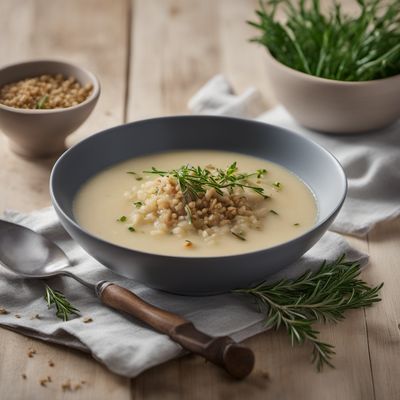
Ingredient
Oat rolled grains, wholemeal
Wholesome Oat Goodness
Oat rolled grains, wholemeal are made by rolling whole oat grains, resulting in a flattened shape that retains the natural bran and germ. They have a chewy texture and a nutty flavor, making them a popular choice for breakfast cereals, baked goods, and savory dishes. These wholemeal oats are known for their high fiber content and are often praised for their heart-healthy benefits.
Origins and history
Oats have been cultivated for thousands of years and have a long history in human consumption. They were first grown in ancient civilizations such as Egypt and Greece and were later introduced to other parts of the world. Oats have played a significant role in traditional Scottish and Irish cuisines, where they are used to make porridge, oatcakes, and other traditional dishes. Today, oat rolled grains, wholemeal are widely consumed globally and are recognized for their nutritional value and versatility in cooking.
Nutritional information
Oat rolled grains, wholemeal are a good source of dietary fiber, providing both soluble and insoluble fiber that aids in digestion and promotes a healthy gut. They are also rich in vitamins and minerals, including iron, magnesium, and zinc. Additionally, they are low in saturated fat and cholesterol, making them a heart-healthy choice. One cup of cooked oat rolled grains, wholemeal contains approximately 154 calories.
Allergens
Oat rolled grains, wholemeal may contain traces of gluten, so they are not suitable for individuals with celiac disease or gluten intolerance. However, they are naturally gluten-free and can be enjoyed by those with mild gluten sensitivities.
How to select
When selecting oat rolled grains, wholemeal, opt for packages that are tightly sealed and free from any signs of moisture or insect damage. Check the expiration date to ensure freshness. Additionally, choose organic or non-GMO varieties if desired.
Storage recommendations
To maintain the freshness of oat rolled grains, wholemeal, store them in an airtight container in a cool, dry place, away from direct sunlight. They can be kept at room temperature for several months or refrigerated for longer shelf life. Avoid storing them near strong-smelling foods, as oats can absorb odors easily.
How to produce
Oat rolled grains, wholemeal can be produced by soaking whole oat grains in water, allowing them to soften, and then rolling them between metal rollers to flatten them into flakes. This process helps retain the natural bran and germ, preserving the nutritional value of the oats.
Preparation tips
Oat rolled grains, wholemeal can be used in a variety of ways in the kitchen. They can be cooked as a hot breakfast cereal, added to smoothies or yogurt bowls, or used as a topping for baked goods. They can also be incorporated into savory dishes such as soups, stews, and meatloaf, adding a hearty and nutty flavor. Additionally, they can be ground into flour and used in baking recipes, such as cookies, bread, and pancakes.
Substitutions
Quinoa flakes or buckwheat flakes can be used as substitutes for oat rolled grains, wholemeal in recipes that require a similar texture and nutritional profile. However, keep in mind that the flavor may vary slightly.
Culinary uses
Oat rolled grains, wholemeal are commonly used in breakfast cereals, granola bars, cookies, and bread. They are also a popular choice for making oatmeal cookies, oatcakes, and crumbles. In savory dishes, they can be used as a coating for chicken or fish, added to meatballs or veggie burgers, or used as a thickener in soups and stews.
Availability
Oat rolled grains, wholemeal are commonly available in regions where oats are cultivated, such as North America, Europe, and Australia.

